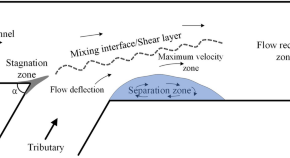A new pH-based tracing method for flow mixing studies in closed-loop experimental flumes: evaluation in an open-channel confluence
Authors (first, second and last of 6)

Collection
Dr. Constantinescu is a Professor in the Civil and Environmental Engineering Department at the University of Iowa and a Research Engineer at IIHR-Hydroscience and Engineering. His research program is based on the use of eddy-resolving simulations to understand the physics of several important classes of environmental and geo-physical flows. Dr. Constantinescu’s current research focuses on turbulence and transport in rivers and lakes, stratified flows, shallow flows, eco-hydraulics, numerical modeling of floods and flow in porous media.
The scientific focus of Prof. Carlo Gualtieri (University of Napoli Federico II, Italy) is Environmental Hydraulics. He studied the exchange processes across the environmental interfaces (air-entrainment, hyporheic fluxes, turbulent diffusion) through laboratory experiments and numerical simulations. In the last decade his main research area was the study, in cooperation with many foreign scholars, of hydrodynamics, morphodynamics and sediment transport in large-size rivers and confluences, such as Amazon, Congo, Orinoco, Yangtze, and Yarlung Zangbo-Brahamaputra, using a combination of field investigation and remote sensing imagery.

